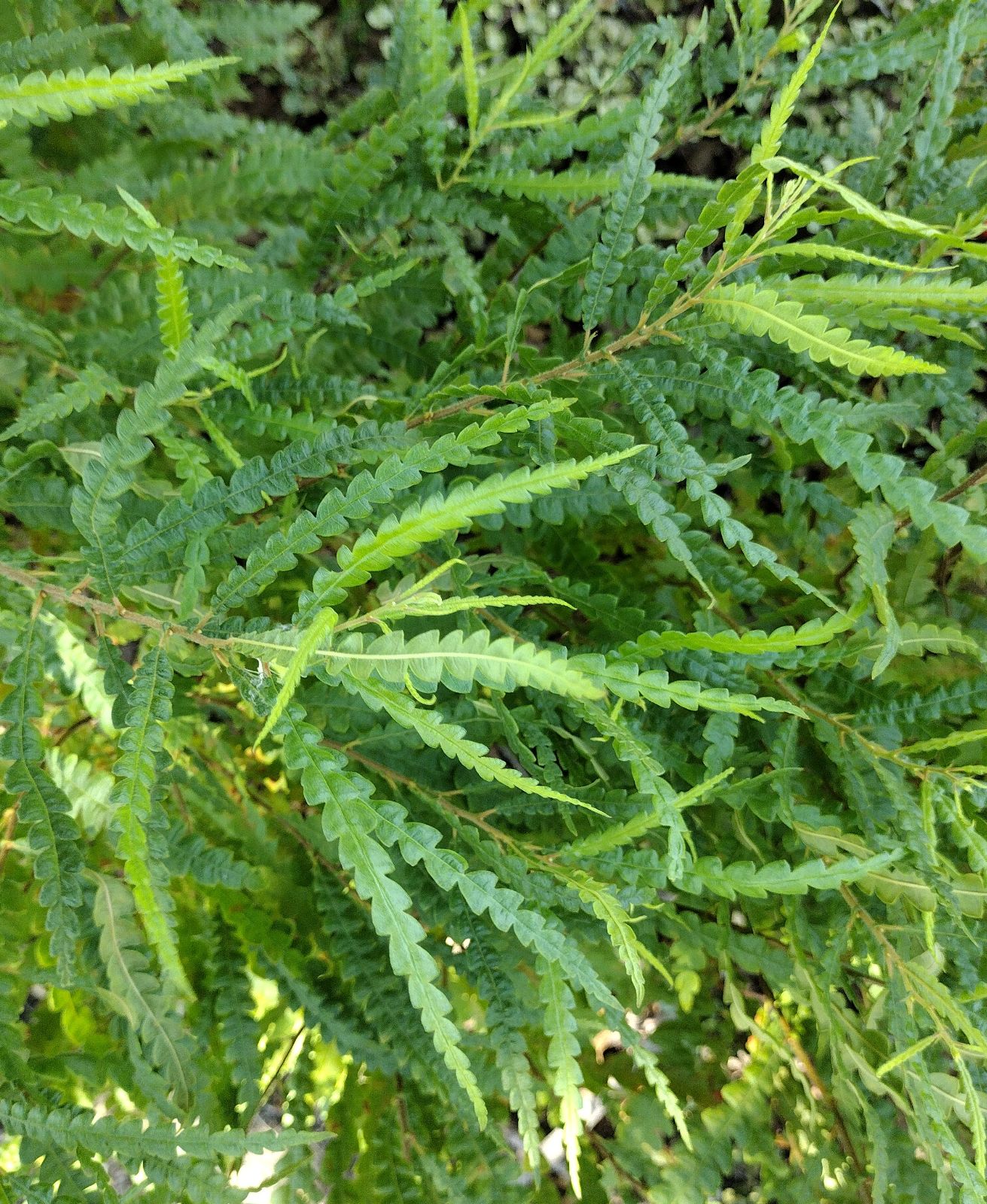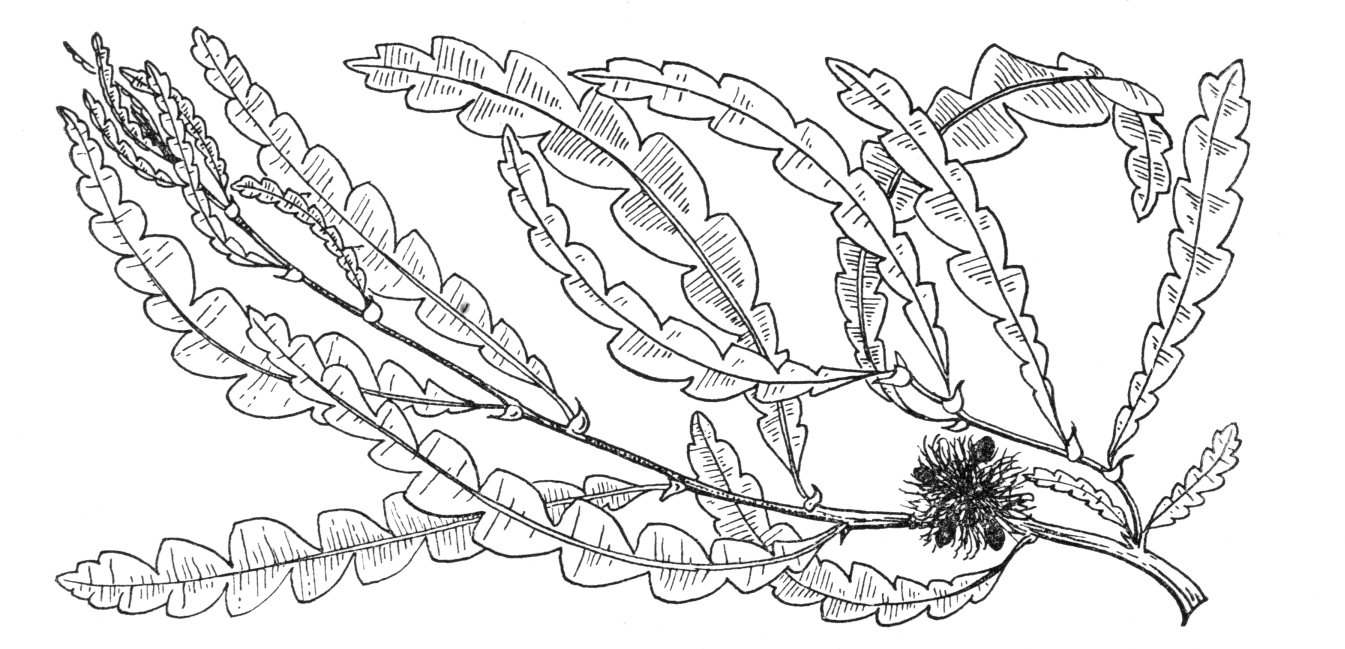Comptonia peregrina
Credits
Article from Bean's Trees and Shrubs Hardy in the British Isles
Recommended citation
'Comptonia peregrina' from the website Trees and Shrubs Online (treesandshrubsonline.
Genus
Common Names
- Sweet Fern
Synonyms
- Liquidambar (sic) peregrina L.
- C. peregrina var. tomentosa Cheval.
A deciduous shrub 2 to 4 ft high, with slender, often erect branches, very hairy when young. Leaves alternate, linear-oblong, tapered at both ends, 2 to 4 in. long, 1⁄3 to 5⁄8 in. wide, the blade deeply cleft (almost to the midrib) into broad, oblique, rounded lobes, 1⁄8 to 1⁄4 in. wide; dark green, downy; stalk 1⁄8 to 1⁄4 in. long. Male catkins cylindrical, 3⁄4 to 1 in. long, 1⁄6 in. wide; closely set with downy, broadly triangular, long-pointed bracts. Female inflorescence globular, each ovary surrounded by eight awl-shaped, downy scales, which give the fruit-cluster a bur-like appearance. Nut egg-shaped, 1⁄5 in. long, shining.
Native of eastern N. America; introduced in 1714, and long a favourite in gardens because of its beautifully cut, fern-like leaves, and pleasant bay-like scent. It likes a peaty soil and objects to lime.
var. asplenifolia (L.) Fern.
Synonyms
Myrica asplenifolia L. Comptonia asplenifolia (L.) Ait


